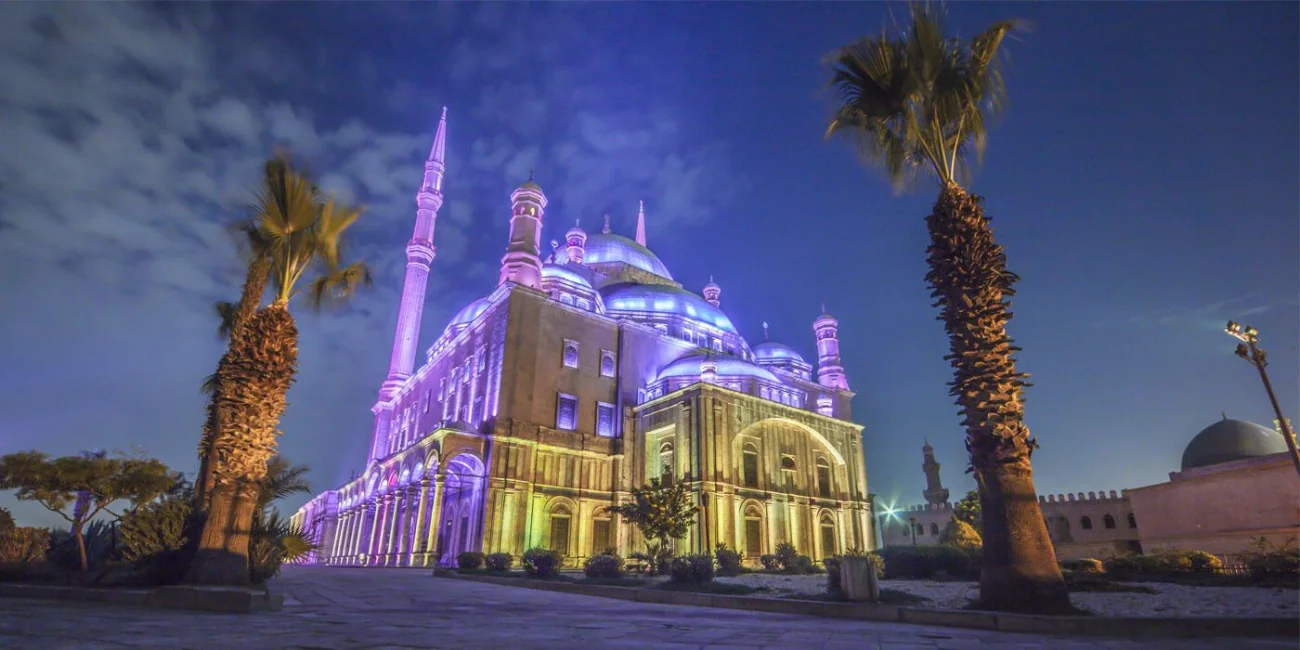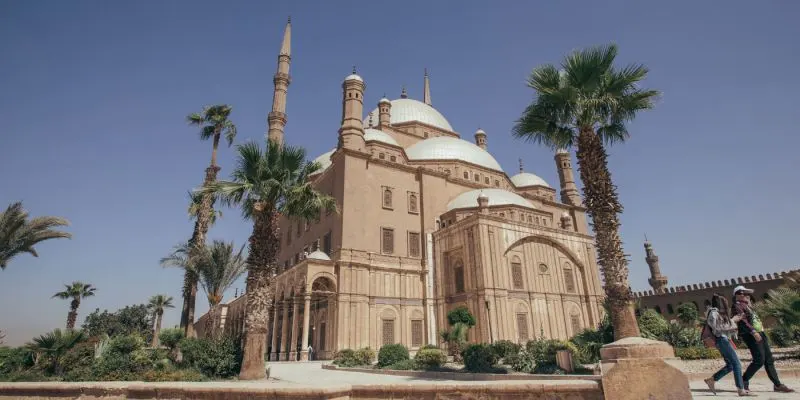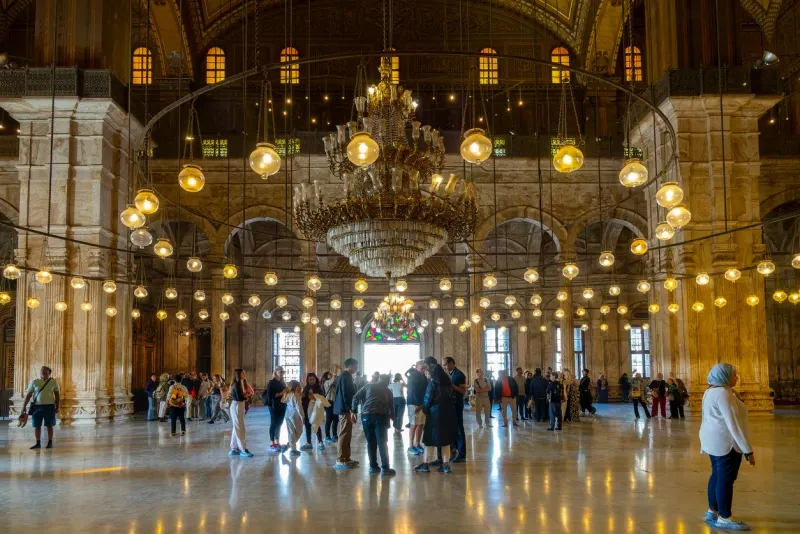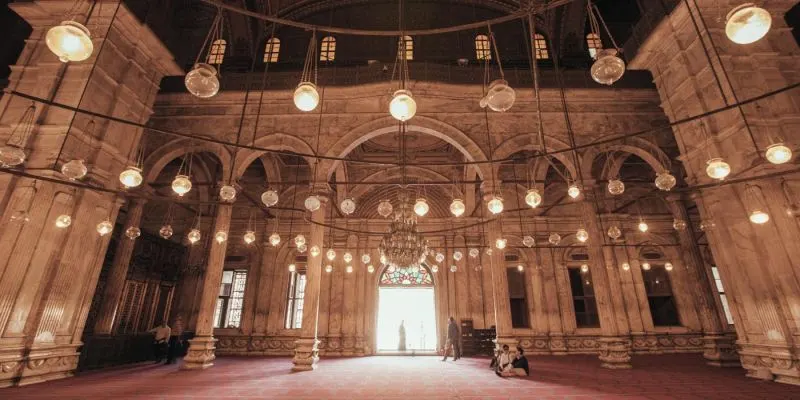Sultan Mohammad Ali

Mohamed Ali, widely revered as the "Father of Modern Egypt," was an Ottoman Albanian commander who rose from humble origins to establish a dynasty that ruled Egypt for over a century. His reign is defined by a radical transformation of the nation's military, economy, and society.
Key Highlights of his Legacy:
Rise to Power: He transitioned from a tobacco merchant’s son in Kavala to an autonomous ruler, bypassing Ottoman control.
Territorial Expansion: At his peak in 1840, his empire extended well beyond Egypt to include Sudan, the Hejaz, the Levant, Crete, and parts of Greece.
Modernization: He is credited with initiating one of the most significant modernization efforts in the 19th-century Middle East, laying the foundation for the modern Egyptian state.
Early Life and Rise to Power in Egypt
From Kavala to Cairo: Mohamed Ali's Origins
Born on March 4, 1769, in Kavala (in modern-day Greece, then part of the Ottoman Empire), Mohamed Ali came from an Albanian family. His father, Ibrahim Agha, served as a commander of a small provincial military force and worked as a tobacco and shipping merchant. When his father died during Mohamed Ali's youth, his uncle Husain Agha raised him alongside his cousins.
Mohamed Ali's early career involved tax collection in Kavala, where his efficiency and administrative skills earned him recognition and advancement. His uncle rewarded his promising work with the rank of "Bolukbashi," setting the stage for his future military career. This early experience in administration and revenue collection would prove invaluable during his later governance of Egypt.
The French Occupation and Mohamed Ali's Arrival
The trajectory of Mohamed Ali Egypt's story fundamentally changed with Napoleon Bonaparte's 1798 invasion of Egypt. This brief but impactful French occupation (1798-1801) shattered the existing power structures and exposed the military weakness of the Mamluk rulers who had dominated Egypt for centuries. When the British forced Napoleon's withdrawal in 1801, a power vacuum emerged in Egypt that would create unprecedented opportunities for ambitious military leaders.
Mohamed Ali arrived in Egypt in 1801 as second-in-command of a 300-man Albanian regiment within the Ottoman expeditionary force sent to reestablish Ottoman control following the French departure. The political chaos following the French withdrawal saw Ottoman forces, Mamluk factions, and British interests all competing for influence in Egypt. During this tumultuous period from 1801 to 1805, Mohamed Ali demonstrated exceptional political acumen.
Securing the Governorship: Political Maneuvering and Popular Support
Rather than relying solely on military force, Mohamed Ali carefully cultivated relationships with multiple factions while building popular support among Egypt's religious establishment and general population. He allied with the prominent Egyptian leader Umar Makram and gained the endorsement of al-Azhar's Grand Imam, Egypt's most influential religious authority.
By 1805, a coalition of prominent Egyptians led by the ulama (Islamic scholars) formally demanded that the Ottoman Sultan replace the existing governor, Hurshid Pasha, with Mohamed Ali. The Ottoman government yielded to this pressure, and Mohamed Ali was officially named Wāli (governor) of Egypt with the rank of Pasha—the highest official title of honor in the Ottoman Empire.

Mohamed Ali Egypt (1769-1849) was an Ottoman Albanian commander who ruled Egypt from 1805 to 1848 and founded the dynasty that governed until 1952. Known as the "Father of Modern Egypt," he transformed the nation through military, economic, and educational reforms that established Egypt as a regional power and created the framework for the modern Egyptian state.
The Mamluk Massacre: Consolidating Power
Eliminating the Old Regime
To secure his absolute authority, Mohamed Ali executed a ruthless political purge to eliminate the Mamluks, the former ruling class who threatened his power.
The Trap: He invited approximately 470 Mamluk leaders to the Cairo Citadel under the guise of a celebration for his son, Tusun Pasha.
The Ambush: As the guests departed through narrow passageways, Mohamed Ali’s Albanian troops trapped and massacred them.
The Aftermath: This brutal act effectively ended centuries of Mamluk dominance in Egypt and consolidated Mohamed Ali’s control, showcasing the "ruthless pragmatism" of his governance.
Revolutionary Reforms: Modernizing Egypt
Agricultural Revolution and Economic Transformation
Economic Modernization: Agriculture & Industry
Mohamed Ali’s modernization strategy relied on a cycle where agricultural revenue funded industrial growth.
Agricultural Reform: He nationalized land into state-controlled tax farms and improved irrigation systems. Crucially, he introduced long-staple cotton, which became a high-value export commodity.
Industrial Expansion: The profits from cotton were reinvested to build state-owned industries. This included textile factories, shipyards, and weapons manufacturing, designed primarily to supply the military and establish Egypt’s first industrial base.
Military Modernization: Building a Formidable Army
Central to Mohamed Ali Egypt's vision was creating a modern, European-style military capable of projecting power beyond Egypt's borders. He reformed the military comprehensively, introducing systematic conscription that drafted Egyptian fellahin (peasants) into regular army service—a revolutionary change from the previous reliance on slave soldiers and mercenaries.
Mohamed Ali imported European military advisors, particularly French officers, to train his troops in modern warfare tactics. He established military schools, arsenals, and training facilities. The result was the nizam al-jadid (new order), a disciplined army organized along European lines that proved capable of conquering vast territories and challenging even the Ottoman Sultan's forces.
Educational and Administrative Reforms
Understanding that modernization required educated administrators, Mohamed Ali Egypt revolutionized the educational system. He established secular schools teaching engineering, medicine, military sciences, mathematics, and foreign languages—primarily French. This represented a dramatic departure from traditional religious education and created a new class of technocrats and bureaucrats.
Mohamed Ali sent educational missions to Europe, particularly France and Britain, where young Egyptians studied advanced sciences, languages, technologies, and organizational systems. These students returned to Egypt as teachers, translators, administrators, and technical experts, forming the backbone of the modernized state apparatus.
The government printing press, established in Bulaq, published textbooks, technical manuals, and European works in Arabic translation, facilitating knowledge transfer and creating a foundation for intellectual development. These educational reforms dramatically increased social mobility in Egyptian society, which had remained largely feudal and static for centuries.

Military Campaigns and Imperial Ambitions
Conquering Sudan and Expanding Southward
Mohamed Ali Egypt's imperial ambitions extended beyond Egyptian borders. Between 1820 and 1821, his forces invaded and conquered Sudan, bringing the region under Egyptian control. This conquest had profound consequences, reshaping Sudanese political structures, redirecting trade routes, and transforming urban centers. The invasion also facilitated slave raids that captured thousands of Sudanese people, many of whom were conscripted into Mohamed Ali's army or worked in his industries.
Arabia and the Wahhabi Campaign
At the Ottoman Sultan's request, Mohamed Ali sent expeditions to Arabia to suppress the Wahhabi revolt in the Hijaz region. His son Tusun Pasha and later Ibrahim Pasha commanded these campaigns, successfully reasserting Ottoman control over the holy cities of Mecca and Medina. These victories enhanced Mohamed Ali's prestige within the Ottoman Empire while demonstrating his military capabilities.
The Syrian Campaigns and Conflict with the Ottoman Empire
Mohamed Ali Egypt's most ambitious military ventures involved direct challenges to Ottoman authority. In 1831, he launched an invasion of Syria, rapidly conquering the Levant and advancing into Anatolia. His forces, commanded by his capable son Ibrahim Pasha, defeated Ottoman armies repeatedly and directly threatened Constantinople (Istanbul), the Ottoman capital.
This aggression alarmed European powers, particularly Britain and Russia, who feared any disruption to the regional balance of power. European diplomatic intervention forced Mohamed Ali to halt his advance. However, when the Ottoman Sultan attempted to invade Syria in 1839 to reclaim the territory, Ibrahim Pasha again crushed the Ottoman forces.
The 1840 Crisis and Diplomatic Settlement
Mohamed Ali's continued control of Syria and his threat to Ottoman sovereignty triggered a major international crisis in 1840. European powers, led by Britain, intervened militarily and diplomatically. Faced with overwhelming international pressure and the threat of British bombardment of Egyptian coastal cities, Mohamed Ali agreed to a negotiated settlement in 1841.
Under the Treaty of London, Mohamed Ali withdrew from Syria, the Levant, and Arabia, but received hereditary rule over Egypt and Sudan for his dynasty. His military was capped at 18,000 troops during peacetime, and he made significant trade concessions to European powers. While this settlement limited his imperial ambitions, it secured his family's long-term control of Egypt.

Mohamed Ali technically served as Ottoman governor but operated autonomously in Egypt. He built an independent military, conquered Sudan and Syria, and threatened Constantinople in the 1830s. After European intervention in 1840-1841, he accepted Ottoman sovereignty in exchange for hereditary rule over Egypt and Sudan, maintaining practical independence while acknowledging nominal Ottoman authority.
Customize Your Dream Vacation!
Get in touch with our local experts for an unforgettable journey.
Plan Your Trip
The Muhammad Ali Mosque: A Lasting Monument
Architectural Legacy in the Cairo Citadel
Constructed between 1830 and 1848, this mosque is the most prominent physical symbol of Mohamed Ali's reign. It sits at the highest point of the Citadel of Saladin, dominating the Cairo skyline.
Architectural Style: Designed by Yousif Boushnaq (from Istanbul), it reflects pure Ottoman imperial architecture, modeled directly after the Blue Mosque in Istanbul.
Key Features:
The "Alabaster" Look: Named for its extensive use of gleaming marble panels.
The Minarets: It features twin minarets standing 84 meters high, the tallest in Egypt.
The Dome: A massive central dome is supported by four semi-domes, creating a vast interior prayer hall.
Memorial to Tusun Pasha
Mohamed Ali commissioned this mosque as a memorial to his favorite son, Tusun Pasha, who died young in 1816. The mosque's grandeur reflects both Mohamed Ali's grief and his ambition to leave a lasting architectural legacy comparable to the great Ottoman sultans. Mohamed Ali himself was buried in the mosque following his death in 1849, ensuring his final resting place would be in one of Cairo's most prominent locations.
Visiting the Muhammad Ali Mosque Today
Today, the Muhammad Ali Mosque ranks among Cairo's most visited tourist attractions. Located within the Citadel of Saladin, approximately 15-25 minutes from downtown Cairo, the mosque offers spectacular panoramic views across Islamic Cairo. The outer courtyard features a distinctive copper clock tower gifted by King Louis Philippe of France in 1845, originally intended as a reciprocal gift for the Egyptian obelisk that now stands in Paris's Place de la Concorde.

Mohamed Ali is buried inside the Muhammad Ali Mosque (Alabaster Mosque) at the Citadel of Saladin in Cairo, Egypt. His tomb is located in the mosque's southeast section near the main prayer hall. The mosque sits on Mokattam Hills at Cairo's highest point, offering panoramic views of the city.
The Muhammad Ali Mosque is located inside the Citadel of Saladin on Mokattam Hills in Cairo, 15-25 minutes from downtown. It's open daily to visitors and is among Cairo's top tourist attractions. The mosque features Egypt's tallest minarets at 84 meters and offers spectacular views across Islamic Cairo and the Egyptian capital.
The Social Cost of Modernization
Burdens on the Egyptian Population
While Mohamed Ali Egypt achieved remarkable modernization, these transformations came at tremendous human cost. The agricultural reforms, military conscription, and industrial labor drafts imposed severe burdens on Egypt's peasant population. Farmers lost traditional land rights, faced increased taxation, and were subject to forced labor obligations. Young men were conscripted into military or industrial service, disrupting family structures and agricultural production.
The mortality rates among conscripted soldiers and workers were high, particularly during military campaigns in inhospitable regions like Sudan and Arabia. The plague epidemic of 1834-1835 devastated Egypt's population, including many enslaved Africans, leading to increased slave raiding to replace losses.
Historical Reassessment
Contemporary historians have increasingly examined the darker aspects of Mohamed Ali Egypt's reign, balancing his genuine achievements in modernization against the suffering imposed on ordinary Egyptians and Sudanese. While he undeniably transformed Egypt's economy, military, and administrative structures, creating conditions for the country's emergence as a modern state, these changes primarily benefited his dynasty and Egypt's emerging elite rather than the general population.
The Dynasty That Ruled Until 1952
Hereditary Rule Secured
The 1841 settlement with the Ottoman Empire established Mohamed Ali's descendants as hereditary rulers of Egypt and Sudan. This dynasty would govern Egypt for over a century, with titles evolving from Wali to Khedive and eventually Sultan and King. Mohamed Ali's successors continued modernization efforts, though with varying degrees of success and growing European interference.
Notable Successors in the Mohamed Ali Dynasty
Several of Mohamed Ali's descendants left significant marks on Egyptian history. Khedive Ismail (1863-1879) continued ambitious modernization projects, including the Suez Canal, though accumulating massive debts that led to British occupation. King Farouk (1936-1952), the dynasty's final ruler, was overthrown by the Free Officers Movement led by Gamal Abdel Nasser in 1952, ending monarchical rule and establishing the Egyptian Republic.

Mohamed Ali Egypt's Enduring Legacy
Father of Modern Egypt
Despite controversies surrounding his methods and the human costs of his policies, Mohamed Ali remains widely regarded as the "Father of Modern Egypt." His fundamental restructuring of Egyptian society, economy, and government created the framework for the modern Egyptian state. The institutions he established—the military, administrative bureaucracy, educational system, and industrial infrastructure—formed the foundation upon which subsequent Egyptian leaders built.
Continuing Relevance in Egyptian National Identity
Mohamed Ali Egypt continues to occupy a prominent place in Egyptian historical consciousness and national identity. He represents a leader who, despite foreign origins, adopted Egypt as his homeland and worked to make it a powerful, independent state. His statue stands in Alexandria's main square, and his name adorns streets, institutions, and establishments throughout Egypt.
Lessons for Leadership and Modernization
Mohamed Ali's reign offers important lessons about political leadership, modernization challenges, and the complexities of historical legacy. His story demonstrates how determined leadership, strategic vision, and comprehensive reforms can transform societies, while also illustrating the ethical dilemmas inherent in rapid, top-down modernization that prioritizes state power over individual welfare.
Mohamed Ali arrived in Egypt in 1801 with Ottoman forces to expel the French. Between 1801-1805, he gained support from Cairo's religious leaders and Egyptian population. In 1805, Egyptian elites demanded his appointment as governor, and the Ottoman Sultan complied. He solidified control by eliminating the Mamluks at the Cairo Citadel in 1811.
Mohamed Ali Egypt modernized the nation through: agricultural nationalization and expansion; establishing textile and weapons factories; creating a European-style army through conscription; founding secular schools in Cairo and Alexandria teaching sciences and medicine; sending Egyptian students to Europe; and developing modern bureaucracy. These changes revolutionized Egyptian society and economy.
At its peak in 1840, Mohamed Ali's empire included Egypt, Sudan, Hejaz (Mecca and Medina), Syria, Lebanon, Crete, and parts of Greece. Following the 1841 Treaty of London, he withdrew from all territories except Egypt and Sudan. His dynasty retained hereditary control over Egypt and Sudan until the 1952 Egyptian revolution.
The Mohamed Ali dynasty ruled Egypt for 147 years (1805-1952). Beginning with Mohamed Ali as governor in Cairo, his descendants governed Egypt with evolving titles: Khedive, Sultan, and King. The dynasty ended when Egyptian King Farouk was overthrown in the 1952 Free Officers Revolution, establishing the modern Republic of Egypt.





















